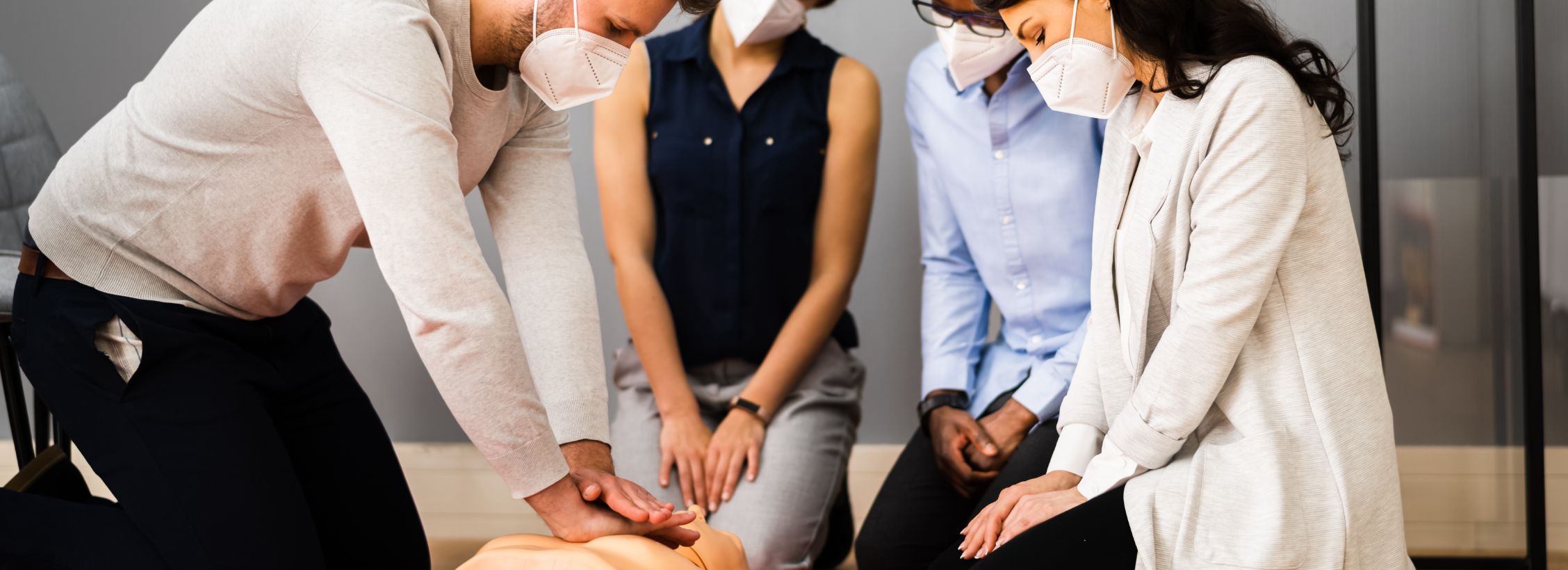If you’re feeling unsure about providing others with first aid – here are some helpful tips on how to make it as safe as possible:
A lot of first aid is very straight forward and, if your casualty is conscious and able, you can still help them whilst maintaining social distance.
For example, if they’re bleeding heavily, you can ask them to apply pressure to the wound while you call 999 or 112.
Keep talking to the casualty and offering reassurance. The fact that you’re there, remaining calm and getting help will go a long way to helping someone who may be feeling panicky or scared.
Ask other people present to help you. For example, calling emergency services 999 or 112 and placing them on loudspeaker, or helping maintain social distance of those present.
The risks to the first aider are low, especially if good hygiene practices are followed:
- Wear a face mask, gloves and apron, if available to you.
- Wash your hands before and after any contact with someone. Washing your hands with soap and water for a minimum of 20 seconds or using hand sanitiser gel if water is not available will significantly reduce the risk of infection.
- Maintain social distance, wherever possible.
Take a short risk assessment. Ask the individual if they have travelled within the past 14 days and/or have experienced any of the following symptoms:
- Cough
- Fever
- Flu like symptoms
- Shortness of breath
- Loss of sense of taste or smell
- In any first aid situation, always consider your safety first.
If your casualty is seriously unwell, unconscious or not breathing, they are going to need your assistance. The following tips will help reduce any risk of infection:
When checking for breathing:
If they are talking – then they’re breathing! If not, then look for a rise and fall of their chest or stomach, and normal breathing. DO NOT listen for breathing by placing your face close to a person’s mouth.
CPR:
New Covid-19 guidance from the Resuscitation Council UK advises NOT to perform recue breaths on a casualty.
- If a casualty is unresponsive and not breathing normally, call 999 or 112 for immediate assistance.
- Use a towel or piece of clothing and lay it over the mouth and nose of the casualty.
- Start chest compressions straight away. Do not give rescue breaths.
- If someone else is present, ask them to fetch the nearest defibrillator, if available.
Continue to perform chest compression only CPR until:
- Emergency help arrives and takes over
- The person starts showing signs of life and starts to breathe normally
- You are too exhausted to continue (if there is a helper, you can change over every one-to-two minutes, with minimal interruptions to chest compressions)
- A defibrillator is ready to be used.

